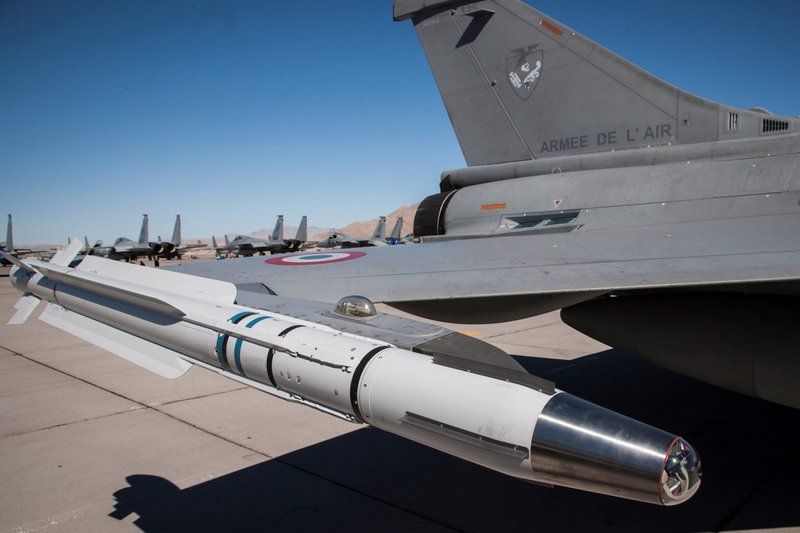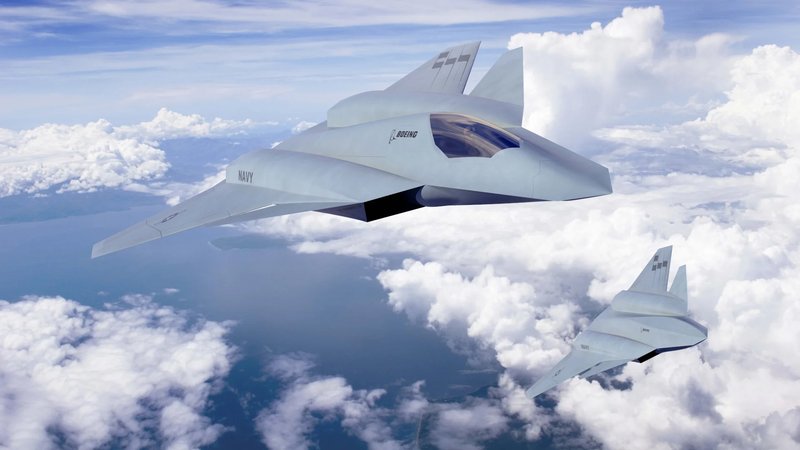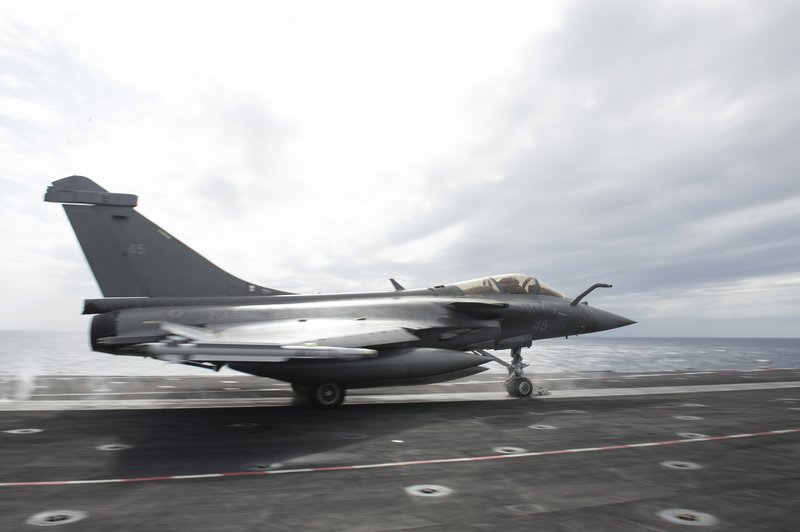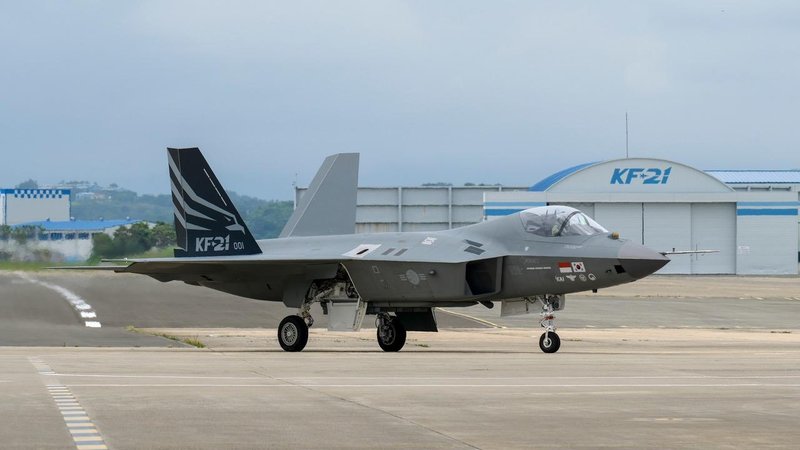Decisive Edge Newsletter | Air | September 2023
Newsletter Sponsors:
Can air-launched missile stocks keep pace with a full-spectrum conflict?
Until the beginning of the war in Ukraine, ammunition – or munitions – stocks were not an item of great interest. It was generally supposed that they existed in sufficient quantities for likely use.
The last 18 months have shown that a high-intensity conflict can drain reserves at a rate far higher than that envisaged. While this has been particularly true of artillery, the same problem is likely to be posed for reservoirs of air-launched ordnance.

Militaries do not necessarily plan for an immediate or prolonged conflict. The opportunity cost of platforms vs weapons vs munitions vs services means that short-cuts are often taken.
With the recent absence of NATO aerial engagements, one obvious economy is a reduction in the number of missiles and guided weapons. However, there exists a definite floor.
‘NATO-standard’ fit for a fighter mission is two medium-range (AMRAAM or Meteor) plus two short-range (Sidewinder or IRIS-T) air-to-air missiles (AAMs). This is nominally 48 in total per squadron (in terms of all aircraft being able to sortie) and with a basic 2:1 reserve, 100 per flying unit would be required.
Of course, procurement is not planned that way. In 2018 the UK’s RAF placed a major order for 200 AMRAAM C/D models at $3.4m each, which is enough simultaneously to arm 100 Typhoon or F-35s (or rather 100 sorties).
Clearly these will not be flown simultaneously, nor will the aircraft discharge the missiles on a daily basis, but as an idea of modern missile stocks for advanced nations, it paints a general picture.

Saudi Arabia, with a roughly similar air force, procured 280 examples in 2021 (at around $2.3m each) largely to keep supplied for use against UAVs launched from Yemen.
Across the Channel, unofficial French Air Force numbers give modern MICA NG medium-range AAM stocks at around 500 examples, although older versions remain operational. Its long-range air-to-ground munition, SCALP, numbers around 200 but France donated around 25% of these to Ukraine and MBDA is still in the process of refilling this gap.

Above: France is estimated to have stocks of around 500 MICA NG missiles. (Photo: MBDA)
The Meteor longer-range AAM, primarily used by the Mirage 2000D and Rafale nuclear stand-off force, numbers around 200.
At the wealthiest end of the spectrum, the USAF purchases around 400 AMRAAMs per year. This is a rolling procurement to replace older – though still usable – models but indicates the number of latest-generation examples it feels necessary to have on hand.
The USN orders slightly less on average, but usually over 300. If we assume that ten years of procurement (3,000 missiles) is considered suitable for ‘first-day’ operations, and 70% of that total (likely too high an estimate) are aboard six deployed carriers at sea this gives 350 per ship, and divided by 60 embarked fighters, that is six per aircraft.
At a very low rate of peer conflict, each aircraft firing two AMRAAMs per week would exhaust a non-resupplied carrier’s stock within a month. A Taiwan-type conflict would turn this into a matter of days.
Barring a US-China war, all of this seems healthy for a force at ‘peace’, but even low-intensity operations have a habit of burning through ordinance, fuel and spares at a higher rate than often forecast.

The question of such expenditure is clearly critical and also difficult, because there is no recent strong evidence of how this might work. It is almost certain that – under wartime conditions – any pilot will likely launch more than one munition at a given target. Air targets have a habit of being replaced and reinforced. Ground targets need to be hit repeatedly. Claims usually exceed actual results by several multiples. Missions need to be flown again and again.
It is challenging to model a realistic scenario for munitions usage. Over seven months of Operation Ellamy, the RAF launched only 230 Brimstone AGMs, in a relatively uncontested environment with few legitimate targets. This makes a poor model for likely future operations.
The phase of the UK’s Operation Shader in 2015-2016 saw release of 1,036 Paveway IV bombs and around 150 Brimstones, with UAVs launching close to 300 Hellfires. Both were low-intensity operations, but 100-plus expensive weapons expended per month is still a large proportion of peacetime arsenals. If militaries buy only a few hundred examples per purchase, this leaves limited room for escalation.

Above: UK operations over Iraq in 2015-2016 under Operation Shader saw around 100 air-launched weapons a month expended. (Photo: UK MoD/Crown Copyright)
Figures from the conflict in Ukraine would be useful as a guide to munition expenditure, but are not available with any real degree of accuracy. One thing that can be determined is that air power has been far less effective than previously thought.
Near-continuous aerial operations have undoubtedly drained the participants’ existing stocks. Russia has turned to all and any willing nations for supply of munitions and likely cannot now manufacture advanced systems itself in any quantity.

Trillium Engineering specializes in the design and production of gimballed imaging systems for manned and unmanned aircraft. See Details
Open-source data suggests Ukraine maintains around 60 modern fighter aircraft, each flying on average just under one sortie per day. All will be carrying a pair of AAMs and likely a pair of air-to-ground weapons. Even if only 25% of missions results in a weapons launch, that is still around 12 per day, or over 300 per month, ie the total RAF Operation Shader munitions use in only three months. And this is probably an extremely low estimate.
The history of war is a history of militaries running out of supplies, often with famous ‘scandals’ attached to their names. With limited budgets and costly weapons, this is not surprising.
But the relatively limited purchase rate over the last decade suggests that NATO and allied air arms are likely low in their stocks of modern air-launched weapons. Both Ukraine and Russia have fallen back on extensive use of unguided bombs and rockets, something that for multiple reasons is likely unacceptable to US and European thinking.
With the lead times required for restocking AMRAAM, Meteor, Paveway and Storm Shadow, significant investment is required in the short term if these are to be usefully available in the near future.
Will a sixth-generation fighter work for aircraft carrier operations?
In mid-September, The War Zone blog published an opinion piece by a USAF A-10 pilot, with a recommendation for the air force to adopt the Boeing F/A-18E/F Super Hornet as a replacement for the venerable ‘Warthog’.
The article was very much on the side of what the A-10 provided as a capability, not specifically as an aircraft. The principle was that a close air support platform, with the crew acting as an airborne forward air controller, remained extremely important for operations.
It also cited the utility of a robust platform operating from austere bases with minimal support and a proven track record, hence the F/A-18 suggestion (however unlikely it is this will actually happen).

Above: USAF and USN efforts to field sixth-generation fighters appear to have diverged, with only some subsystems likely to be common to NGAD and F/A-XX. (Image: Boeing)
As a sidebar, it reopened the point about whether a single design could be equally useful as both a land and naval aircraft, a point worthy of consideration as the US gets serious about fielding a sixth-generation fighter.
The best example of an aircraft used by both air and naval arms is arguably the F-4 Phantom. It was intended to offer power, performance and payload irrespective of the user and designed to be robust – for naval operations – and with room for growth.
The key point in the case of the Phantom and the argument about a USAF Super Hornet is that both are a strong multi-role design that could be adopted based on their strengths.
One weakness of the F-35 is that it was forced on three air arms as a compromise design that arguably none really wanted in the form they got it, but their political masters insisted. There is a significant history of such efforts, and they rarely end well.
Of all new combat aircraft currently under development, only a few exist in this air force/navy part of the Venn diagram. Whether China’s J-31 was always intended for naval use is unclear, but the general consensus is that this will likely be its major role.
India’s domestic Tejas design was rather forced on the navy in the name of commonality, but this model has now been abandoned by that service in favour of a new type.
Now, the rise of sixth-generation fighter programmes has brought the subject of common aircraft back to the table.
Major efforts are currently underway in the US and Europe. The USAF and USN seem to have decided that a common airframe for land and carrier operations is too difficult and brings unnecessary risk.
Unlike the F-35, therefore, the air force’s NGAD and navy’s F/A-XX will be largely separate, although some internal systems may overlap. By comparison the Franco-German-Spanish SCAF has been intended from the outset to serve with the French Navy on board its new PA-2 carrier.

Above: Adapting the SCAF design to produce a carrier-capable replacement for the Rafale M (pictured) poses significant challenges. (Photo: USN)
This has rarely received the attention that perhaps it should. Of the current and potential future partners only France has need of this capability, making naval design features essentially dead weight for land operations.
But beyond the need for reinforced landing gear and similar aspects is a more basic issue: carrier aircraft have to offer stability at low speed and this is a primary driver of their form.
As SCAF like most new designs will focus on low radar cross-section (RCS), it is likely to have small and carefully shaped control and flight surfaces. Canard wings as seen on the Rafale for just this low-speed, high-angle of attack flight condition are likely not compatible with low RCS, and the same is probably true of large vertical tails.
Engine inlet design may also cause complications, while the aircraft’s skin – a crucial part of any stealthy package – will have to be tolerant of extremely harsh and corrosive conditions.
This is not to say that the goal is unachievable, and the final design has yet to be made public. It is possible that a compromise solution can be found.
A robust naval variant may sit alongside a dependable land-based fighter, as is the case with Rafale. But the SCAF team have set themselves a very demanding goal and from a historical perspective the odds are not in their favour.
Shifting balance – will Middle Eastern air forces turn to new sources for advanced equipment?
Few defence markets are as politically influenced as the sale of equipment to the Middle East. A combination of wealth, a tense strategic situation and the absence of advanced indigenous products in many respects has meant that Gulf Cooperation Council (GCC) states in particular have come to be regarded as a priority export destination for virtually any new air, land or sea system.

Above: GCC nations such as Bahrain have traditionally turned to Europe and the US for supplies of combat aircraft. (Photo: USAF)
In turn, these nations tend to use such offerings to maintain international friendships and trade relations. In the aviation sector, the polyglot forces of Saudi Arabia, Qatar and the UAE are an example of this political hedge-betting, ensuring no single supplier has control over their military capability.
This is particularly true at the most advanced end, where exported platforms such as combat aircraft are usually downgraded to some degree.
Traditionally it has been US and European companies that have competed for these prizes, but this may be starting to change. Several new providers have arrived on the stage and are seeking to build their own bridgeheads in the region.
Until February 2022, Russia was making determined steps to regain some of the market share but the political landscape – particularly its support of Syria and Iran – meant that it was always unlikely to achieve much.
Following its invasion of Ukraine even previous customers are likely to have reservations. The ability of Russian industry to supply high-end products has also been severely compromised.
With the absence of a previously strong competitor, the way is therefore open for newer providers. Turkey has made no secret of its objective of becoming a major defence supplier, while South Korea’s KAI has been quietly building a strong customer base with the T-50 attack/trainer jet series and its Surion medium-weight helicopter is also offered.
More interestingly, the uncertain contribution of Indonesia to the KF-21 fifth-generation fighter programme opens the door for other partners. Such participation would be of definite interest to the more industrially advanced states in the region.
India has also been active and is keen to achieve exports of its own indigenous products. Meanwhile Japan’s transport and maritime patrol aircraft are likely of interest, and the same is true of Embraer’s C-390. Should the Abraham Accords evolve into further improved relations and trade, it is even possible that Israeli products might become a more common sight.

Above: Fifth-generation fighters from South Korea and Turkey could prove attractive to air forces in the Middle East. (Photo: Republic of Korea DAPA)
But the elephant in the room is China. With lines clearly drawn between the US and the CCP, the politically tempered procurement approach would be tested should one of the GCC countries procure an armed Chinese product.
The joint (with Pakistan) JF-17 fighter aircraft is an obvious item for export and might be accepted by Washington. But should China – with its more relaxed attitude to defence exports – begin to provide advanced UAVs or missile defence systems, US allies may find themselves in a position similar to Turkey and its S-400 saga.
The strategic importance of the region means that US and European governments will not simply accept a new political player crowding them out. But with many local politicians wishing to keep relatively neutral relations between the major world powers, growing Chinese or Indian imports is a strong possibility.
So far France (and especially the Rafale) has been the major beneficiary of US limits on certain technology sales, plus Russia’s pariah status and the desire for a mixed supplier base. But its selling point as ‘not America’ seems likely to be challenged by other states that can also advertise more flexible export positions. This may be particularly relevant if collaboration continues with the far more conservative Germany.
The desire to develop local industry is also likely to be a significant determinant of future advanced suppliers. The importance of intellectual property rights and domestic input have been climbing over the last decades and this is only likely to increase further.
Becoming a valued partner for an advanced programme would be a definite coup for states traditionally seen merely as purchasers. Transport aircraft, UAVs or light combat aircraft are an obvious starting point, and there are several examples of each on offer.
In the short term, strong involvement with programmes is relatively unlikely for many countries in the region. But the examples of Turkey or Korea, where component supply became assembly, then local modification and finally indigenous products, are compelling.
If the US is unwilling to provide such a path, there are likely several alternative exporters more inclined to offer such a prize.
Don't want to miss out on future Decisive Edge content? Make sure you are signed up to our email newsletters.














